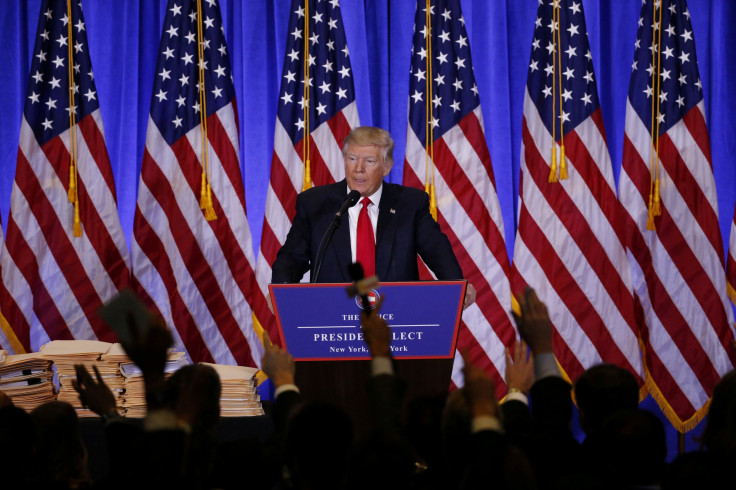When Does Donald Trump Go Nuclear? Football, Codes Will Be His; Can Launch In 5 Minutes

In four days, President-elect Donald Trump will go nuclear.
The Republican will officially take the Oath of Office Friday in Washington and become the 45th president in the country’s history, assuming all the powers as the head of the executive branch and military, including the president’s “emergency satchel,” better known as the “nuclear football.”
The “football,” which every president since Dwight D. Eisenhower has had at his disposal, contains the launch codes for the military’s nuclear arsenal and is held by one aide who will shadow Trump throughout his presidency in the event he needs to launch a nuclear strike.
However, precisely when Trump assumes the ultimate role of commander-in-chief isn’t clear. Trump will be president at noon Friday, but the transfer of the codes or “football” between administrations is “rarely discussed,” Time reported earlier this month.
Some, including former Democratic presidential nominee Hillary Clinton, have repeatedly questioned Trump’s temperament and if he could be trusted with the power to launch the most destructive weapons known to man.
“Do we want his [Donald Trump’s] finger anywhere near the button?” Clinton asked a crowd in San Diego in August according to The Guardian.
Throughout his campaign, The Guardian reported, Trump made statements about nuclear weapons and their use. For example: “Somebody hits us within ISIS, you wouldn’t fight back with a nuke?”; “If we have them, why can’t we use them?” and “Then why are we making them? Why do we make them?”
Despite his apparent ease in considering a nuclear attack, Trump would have to follow a protocol that involves military leaders prior to a strike.
In September, Bloomberg provided a hypothetical timeline of how Trump could actually launch a nuclear attack. First, the president considers a strike. (That decision is his alone, International Business Times reported.) Second, he brings in military and civilian advisers for a meeting in the Situation Room in the White House, including the Pentagon’s deputy director of operations who’s in charge of the National Military Command Center or “war room.”
Following the meeting, which could take 30 seconds or less if a strike has already been launched against the U.S., the president decides to launch or not.
If he does, Trump must authenticate the order. This involves the “biscuit,” a laminated card listing codes that the president must recite back to the “war room” official.
From there, the war room goes forward with the launch order, which includes a war plan, the time of launch, and other codes needed to fire a nuclear missile. The plan is then relayed around the world to other commands.
Submarine crews and crews at an intercontinental ballistic missile base receive the plan and begin preparations. Each of the crews have sealed-authentication system (SAS) codes held in safes; they compare the codes with those sent from the war room. Several more steps, taking minutes, are followed for launch preparation.
The time between order and actual launch depends on where the missiles are launched. If from silos on land, the elapsed time would be about five minutes and from a submarine it would be roughly 15 minutes.
© Copyright IBTimes 2024. All rights reserved.





















